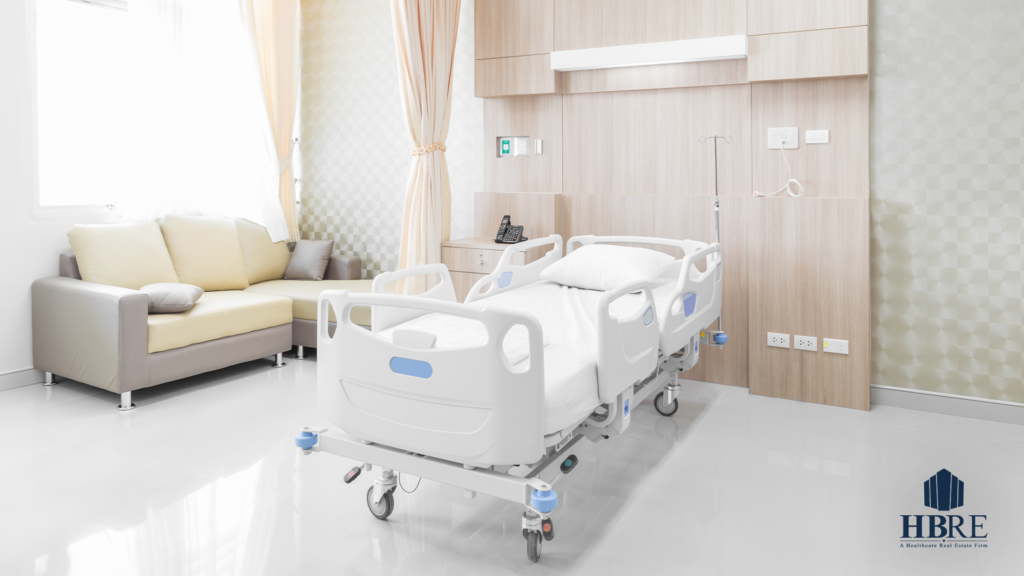In 2018, an adaptive reuse project in Houston transformed from office space into medical use, with hospitality as the focus. According to an article by Forbes, the common area features seating and work areas, providing places for patients and visitors to work while they wait. It also offers a conference room, equipped with media resources and private rooms as well. Not only does this model contribute to a comfortable patient experience, but it allows all patients to wait in one larger space, rather than individual physician’s suites. From this one common area, patients can digitally check in and be notified when it’s time for their appointments. In a culture that focuses on consumer experience, this hospital is meeting expectations.
From virtual check-ins to online payments, medical groups across the country are embracing the consumer focus. One primary care physician suggests that the pandemic caused providers to remember the initial reason they went into healthcare—the patient. In light of current events, some hospitals are adjusting their design plans to better cater to patient experience.
Telehealth Is Not a Trend
It’s safe to say that telehealth made a dramatic impression on the healthcare industry in 2020. It is no longer just a topic for the future, but a significant part of current and future medical care. In fact, 83% of patients still anticipate the use of telehealth even after this pandemic. That data suggests that patients consider telehealth part of their patient experience.
But the widespread adoption of this technological resource won’t dramatically reduce the physical footprint of medical facilities in the long term. Physical buildings will still be necessary for a variety of basic patient treatments. And in some cases, telehealth visits will continue to lead to more in-person visits for further treatment or testing. But since telehealth is an important avenue for patient treatments, hospitals may need to design physical spaces within their facilities for physicians to host virtual appointments.
Cleanliness Is Key
While the words “sterile” and “hospital” are usually connected, the cleanliness factor has been heightened to new levels. The increased risk of contracting a contagious virus is a top concern for many. With the intensified focus on cleanliness, medical facility owners should be mindful of their basic sanitation methods. Patients will want to make sure they remain safe from viruses, infections, and other issues. And medical tenants will want to ensure they have the resources they need to maintain the cleanliness of their space and shared spaces within the facility.
Patient segmentation is one way that hospitals are maintaining cleanliness. Since the beginning of the pandemic, hospitals have started assigning specific spaces for patients with the virus. Patients who do not have the virus remain in a separate area to avoid contamination. One physician feels that segmenting patients by treatment needs could allow physicians to focus on their specific patient group, monitoring outcomes. Not only does segmenting contribute to the cleanliness factor, but the individual attention to specific medical needs could support patient experience.
Patient Experience and Healthcare Real Estate
While it may seem like patient experience trends are primarily a concern for medical groups and health systems, these issues impact medical real estate owners and landlords. As the trend leans more heavily on patient experience, medical tenants will look for healthcare facilities that are conducive to these needs. Much like choosing the right location for a new facility, medical professionals may be more selective about which facility can offer the best options for building positive patient experiences.
The patient experience trend has been growing for some time now. HBRE is familiar with topics like patient experience and how they impact medical real estate. This team of real estate advisors understands what features to review within a healthcare facility that could make or break a client’s desire to lease or purchase it. Everything from parking convenience to reviewing negative pressure areas is part of their property review process. Medical teams who would like to learn more about how their physical facilities can fall in line with the patient experience trend can contact HBRE today—info@hbre.us.
If you are interested in learning more about investing in commercial real estate, or if you have questions about buying, selling, or leasing a commercial property, please contact an HBRE advisor. Our team of experienced CRE professionals have the skills and insight to assist with all property transactions. To reach out to us directly, email [email protected] or call 615-564-4133.




